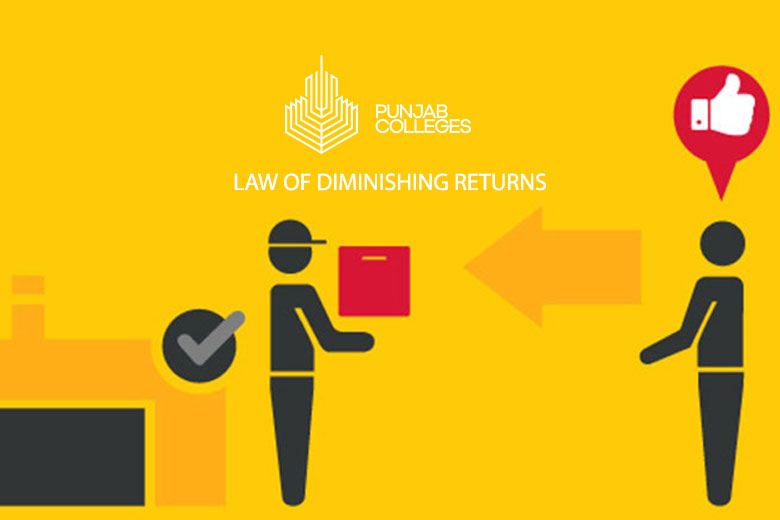Law of diminishing returns in software engineering:
Law of diminishing returns This is a marginal decrease. That is, the increase is smaller each time, therefore, another way of calling this phenomenon is the law of diminishing marginal returns.
According to the law of diminishing (marginal) returns, increasing the quantity of a productive factor in the production of the good or service in question causes the production yield to be lower as we increase this factor. As long as the rest of the factors are kept at a constant level (ceteris paribus).
The basic concept of diminishing marginal returns needs to be explained. If we increase the amount of a productive factor and leave the amount used for the rest fixed, there will come a time when the amount of final product that we obtain is less as we produce more and more. There may even come a time when by increasing a unit of the factor used (for example, labor or machinery), production decreases.
Here the law of diminishing returns has been explained in simple words. It seems that despite what may be thought a priori, increasing a factor not only does not increase the production of the good or the service. However, it can lead to a gradual decrease in the quantity produced.
It is necessary to differentiate this process from that which occurs in diseconomies of scale, the opposite case of economies of scale. In these, the decreases in the production increases are the consequence of the increase of all the factors in the same proportion and not of just one of them, as in the case of diminishing marginal returns.
The law of diminishing returns is generally attributed to the economist David Ricardo, although its principles were defined by the Neapolitan Antonio Serra many decades before.
Example of the law of diminishing returns:
The existence of diminishing returns may seem logical if we think about it from the following point of view: not by having more workers in construction necessarily the work is done more quickly and efficiently.
There may come a point where so many people working in the same space can become bothered by lack of space and not perform their tasks correctly. A greater number of workers will cause the level of production to decrease for each unit of a worker employed. In that case, the marginal increase in production is negative.
The same thing happens by increasing the capital factor. For example, imagine that only one person works in a garden. The work you have to do to produce is enormous. If you buy a tractor you will be able to perform your tasks much better. But buying another tractor will be of no use to you as you cannot drive both at the same time.
Just as the first tractor increased production, the second tractor did not, that is, the marginal performance was zero when the second tractor was added. Let’s imagine you get 10 more tractors. Because you will have to use part of your garden to park them, production will be reduced, with the marginal yield decreasing for each tractor that is added. This example clarifies the law of diminishing returns precisely and justifiably.



